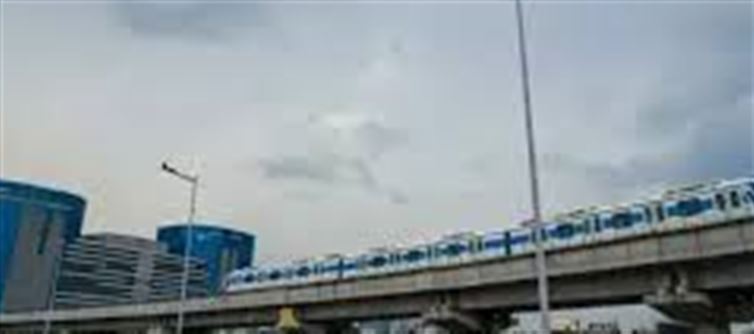
Good news for residents of Gurugram and surrounding areas in Haryana! The haryana Mass Rapid Transit Corporation (HMRTC) has officially finalized the Detailed Project Report (DPR) for a new metro line connecting Gurugram Sector-56 to Pachgaon. This metro project aims to provide an efficient and eco-friendly mode of transportation for commuters in Gurugram and nearby regions, easing traffic congestion and improving the public transportation system.
Key Details of the New Metro Line:
1. Route and Alignment:
o The metro line will connect Sector-56 in Gurugram to Pachgaon, which is located on the outskirts of the city, in the Gurugram district.
o The new route is expected to boost connectivity between key areas of Gurugram and the expanding suburban regions.
o The alignment will include multiple residential and commercial hubs, making it highly convenient for both daily commuters and people working in these areas.
2. Length of the Line:
o The total length of the Gurugram Sector-56 to Pachgaon metro line will be approximately 13 to 14 kilometers.
o This distance will help cover several densely populated areas, providing a quicker, more reliable mode of travel compared to road transport.
3. Number of Stations:
o The metro line is expected to feature 9 to 10 stations along the route, including major interchanges and local stops for residents and professionals.
o These stations will cater to the growing demand for urban transportation and ensure that people can travel comfortably to their destinations.
o The stations will be equipped with modern amenities and designed to handle large crowds, with provisions for wheelchair access and other inclusive facilities.
4. Benefits:
o Reduced Traffic Congestion: One of the key benefits of this metro line will be the reduction in traffic congestion in Gurugram, especially during peak hours. The metro will offer a reliable and fast alternative to road transport.
o Environmental Impact: With the shift to a cleaner mode of transportation, this metro line will contribute to reducing pollution and carbon emissions in the region.
o Time-Saving: The metro will significantly reduce travel time between Sector-56 and Pachgaon, making commuting more convenient and less stressful for passengers.
Project Timeline and Funding:
· The Haryana government is expected to begin work on this metro line in phases, with the construction of the first phase set to commence soon after all the approvals are in place.
· The funding for this ambitious project will likely come from both the state government and the central government, with some contribution from private partners.
· The project is expected to be completed in 3 to 4 years, with the first stretch of the metro line anticipated to be operational by 2027 or 2028.
Why Is This Metro Project Important?
· Growing Demand for Public Transport: Gurugram, as one of the fastest-growing cities in India, faces an increasing demand for efficient public transportation systems. The new metro line will serve not only the residents of Gurugram but also those traveling from surrounding towns and villages.
· Urban Expansion: With the rapid urbanization of the region, particularly in areas like Pachgaon, the metro line will play a key role in promoting sustainable development and better urban planning.
· Commuter Convenience: The metro will reduce reliance on private vehicles, leading to a reduction in air pollution and offering a hassle-free commute.
Conclusion:
The Gurugram Sector-56 to Pachgaon metro is set to be a game-changer in the region's public transport infrastructure. Once completed, it will make commuting more accessible, efficient, and environmentally friendly, enhancing the quality of life for thousands of residents and commuters. With the DPR now finalized, the focus will shift to the construction phase, and residents can look forward to improved connectivity in the coming years. Keep an eye on this project as it progresses, as it promises to be a crucial development in Gurugram’s urban landscape.
Disclaimer:
The views and opinions expressed in this article are those of the author and do not necessarily reflect the official policy or position of any agency, organization, employer, or company. All information provided is for general informational purposes only. While every effort has been made to ensure accuracy, we make no representations or warranties of any kind, express or implied, about the completeness, reliability, or suitability of the information contained herein. Readers are advised to verify facts and seek professional advice where necessary. Any reliance placed on such information is strictly at the reader’s own risk.
.jpg)




 click and follow Indiaherald WhatsApp channel
click and follow Indiaherald WhatsApp channel